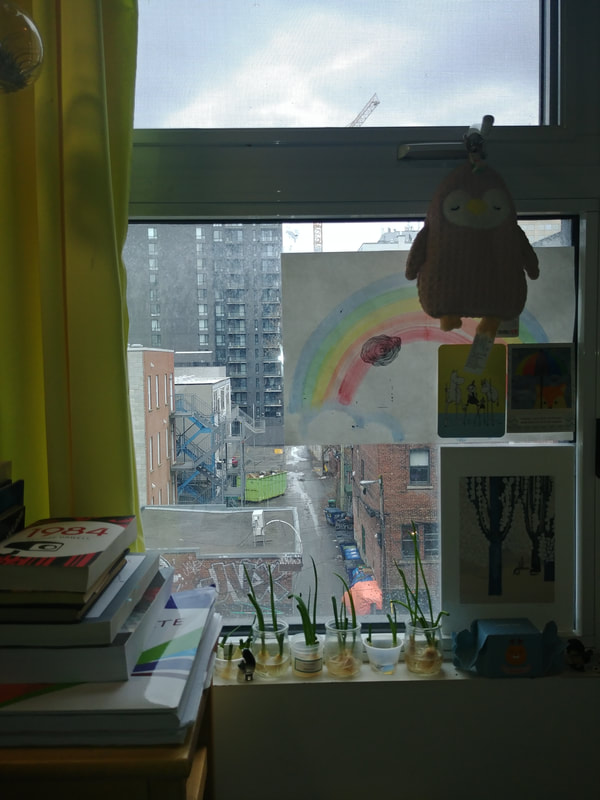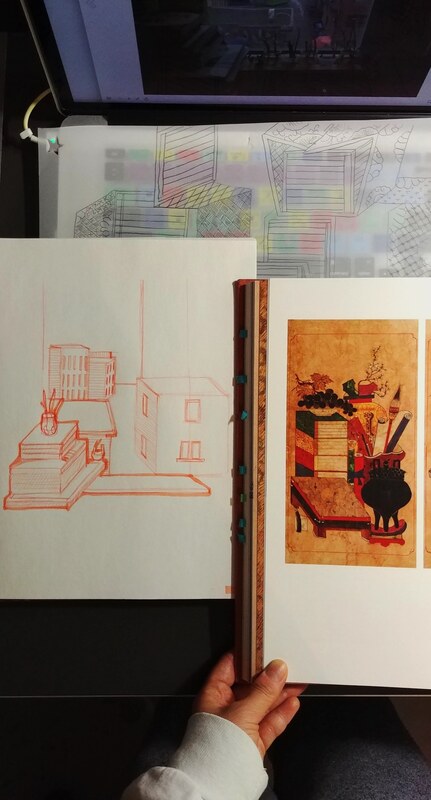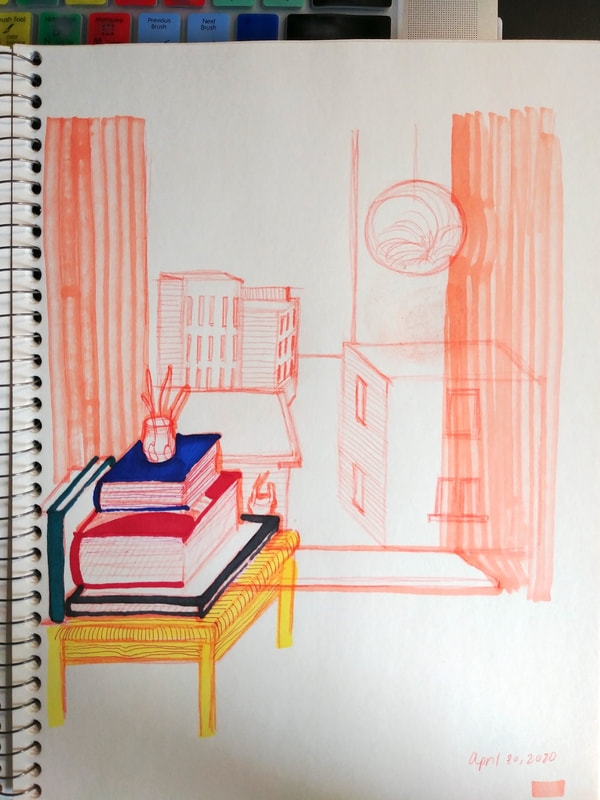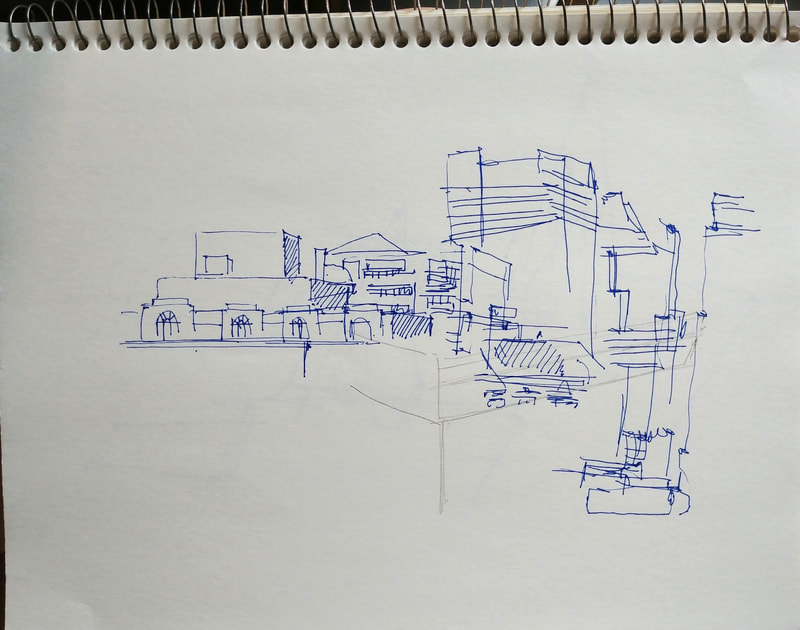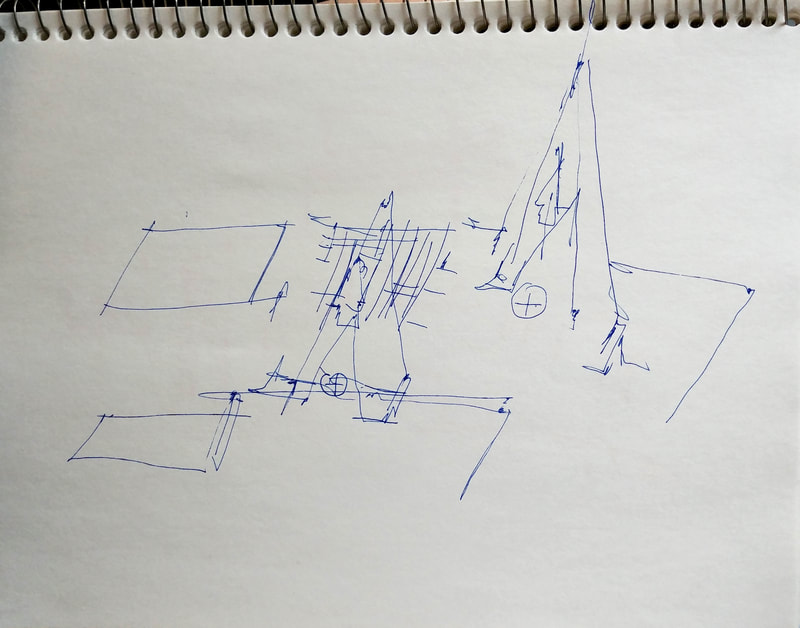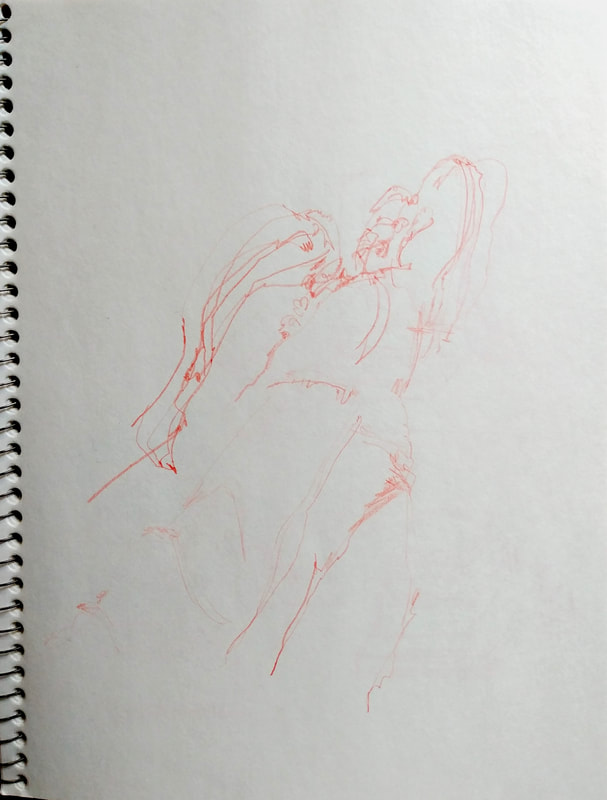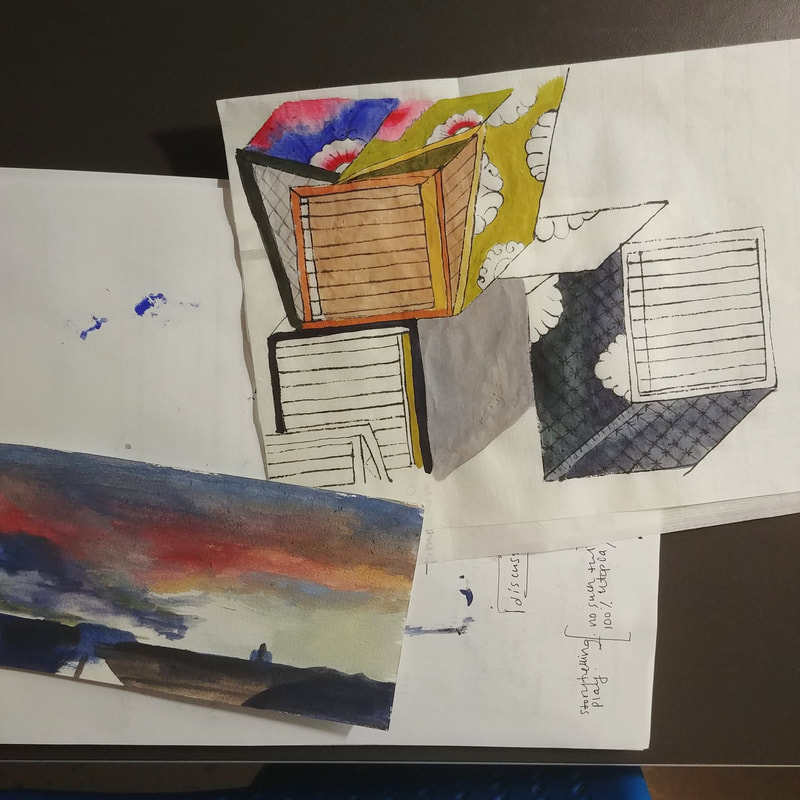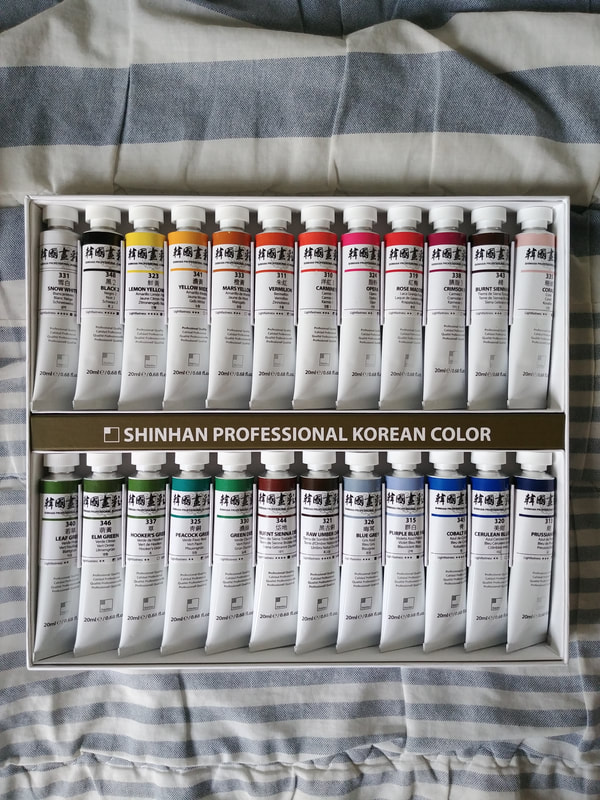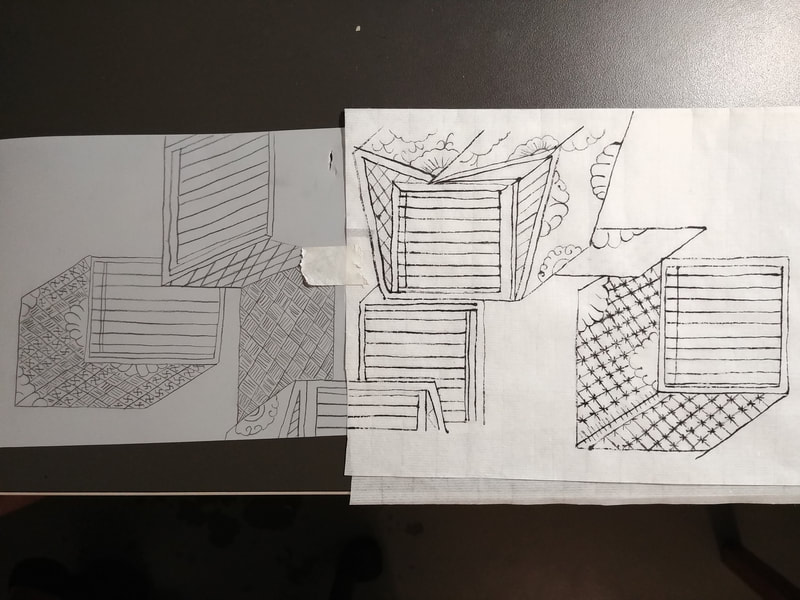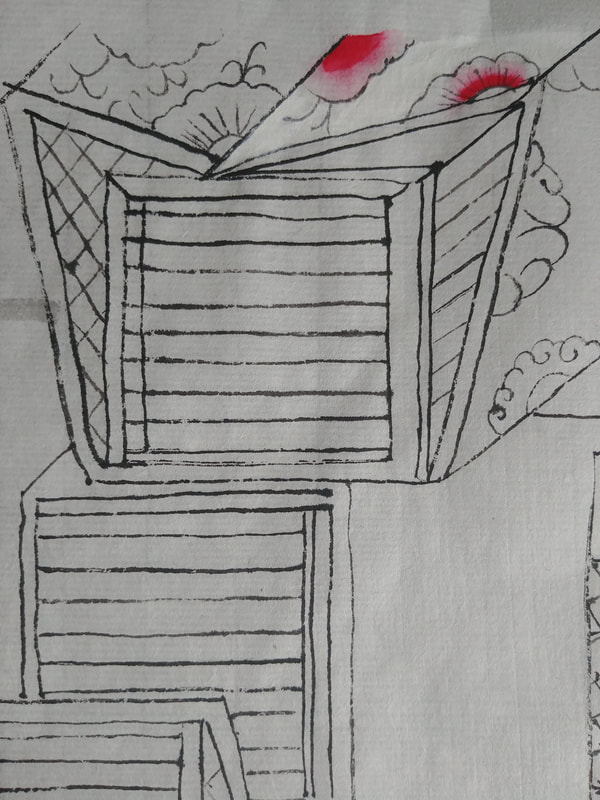|
What does it mean to produce 'chaekgeori' (books and things) paintings in this day and age - specifically as a Korean-Canadian living in Montreal, QC during self-isolation? The Korean folk painters during the Joseon dynasty would have also had to draw inspiration from their interior surroundings. My windowsill has a lot to offer... (thank you Kathleen, for inspiring me to look outside my window and pursue my interest in piles of books resembling buildlings!)
0 Comments
Vid call studio session with Dave. Started with filling in the colours of the books and their decorated cases (layering one colour after another at times to try our different colour combinations), and then spontaneously explored painting a scene from Oakville inspired by Dave's watercolour landscape painting he was doing with me. A part of me felt 'wrong' to be painting in such an abstract manner as this is not the intended purpose of 'Asian watercolours', but at the same time - why not?
Bleeding occurs as I apply ink onto the delicate hanji calligraphy paper. Not the right paper to use, but it was worth the experiment. I will try using watercolour pencil crayons to add more colour.
Read the following chapters within Loneliness, Clark E. Moustakas, (1996):
Preface Acknowledgements I - The terror in love and loneliness Here are the quotes that stuck out to me: "I believe it is necessary for every person to recognize his loneliness, to become intensely aware that, ultimately, in every fibre of his being, man is alone - terribly, utterly alone [...] It is this terror in loneliness which evokes new senses and makes possible the experience of deep companionship and radiant beauty." (Moustakas, 1996, p.8-9) By being lonely, we have a better understanding of the self and what occurs around us. "I have concluded that loneliness is within life itself, and that all creations in some way spring from solitude, meditation, and isolation." (Moustakas, 1996, p.10) The roots of creation according to Moustakas: solitude, meditation and isolation. What do I think? "I began to see that in the deepest experiences the human being can know - the birth of a baby, the prolonged illness or death of a loved relative, the loss of a job, the creation of a poem, a painting, a symphony, the grief of a fire, a flood, an accident - each in its own way touches upon the roots of loneliness." (Moustakas, 1996, p. 21) This made me think about how aspects of our everyday lives affect our sense of loneliness. I wonder if the minhwa 'folk' painters in Korea during the Joseon dynasty felt this way too. |
Archives
July 2020
Categories
All
|
